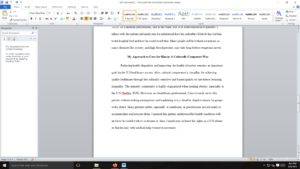Systems Development Life Cycle
In the media introduction to this module, it was suggested that you as a nurse have an important role in the Systems Development Life Cycle (SDLC). With a focus on patient care and outcomes, nurses may not always see themselves as contributors to the development of new systems. However, as you may have observed in your own experience, exclusion of nurse contributions when implementing systems can have dire consequences.
In this Discussion, you will consider the role you might play in systems development and the ramifications of not being an active participant in systems development.
To Prepare:
- Review the steps of the Systems Development Life Cycle (SDLC) as presented in the Resources.
- Reflect on your own healthcare organization and consider any steps your healthcare organization goes through when purchasing and implementing a new health information technology system.
- Consider what a nurse might contribute to decisions made at each stage of the SDLC when planning for new health information technology.
Post a description of what you believe to be the consequences of a healthcare organization not involving nurses in each stage of the SDLC when purchasing and implementing a new health information technology system. Provide specific examples of potential issues at each stage of the SDLC and explain how the inclusion of nurses may help address these issues. Then, explain whether you had any input in the selection and planning of new health information technology systems in your nursing practice or healthcare organization and explain potential impacts of being included or not in the decision-making process. Be specific and provide examples.
Answer preview
Maintenance of the system is critical to prevent any errors or failures in its utilization. The HIT system can be maintained through software support, which needs to be changed over time to improve its function. The repercussions of not engaging nurses in the SDLC maintenance phase are that it may hinder the system’s proper running (Garcia-Dia, Chan and Park, 2019). It is because nurses may not be up to date with the new project, and their input to facilitate changes may also be dismissed. However, this issue can be avoided by informing nurses of the most recent changes to the system, which is communicated with other nursing staff.
In my practice, the entire nursing staff was excluded from all the phases of the SDLC. The selection and planning of the new HIT system was a mystery for most nurses, and the only ones who had an idea of what it comprised were the senior members. As a result, the new project’s functioning failed, and time and resources were consumed in fixing the identified errors and gaps. For example, most staff felt uncomfortable with the new HIT system because it was integrated with advanced software, challenging most employees.
[897 Words]

Systems Development Life Cycle




